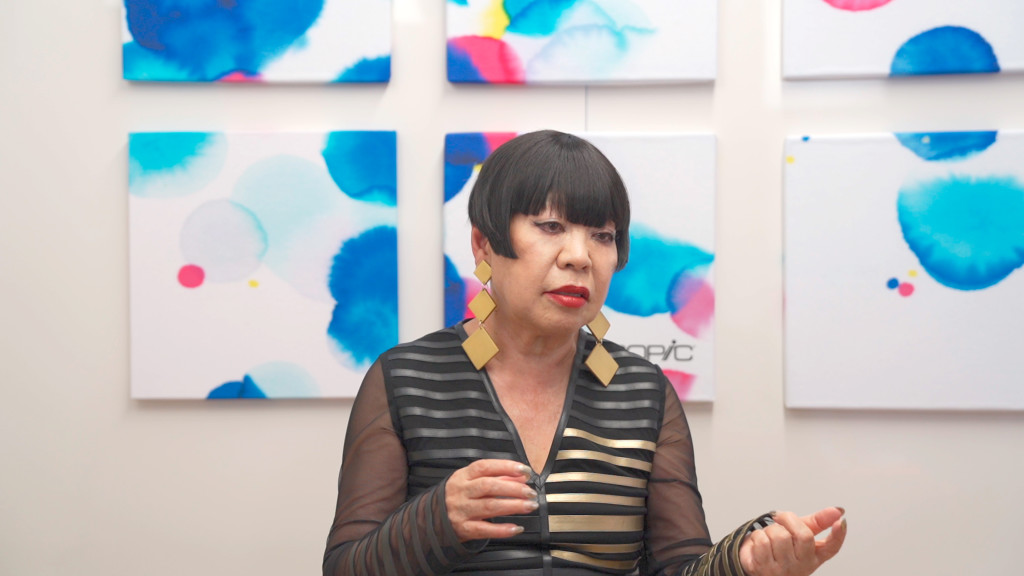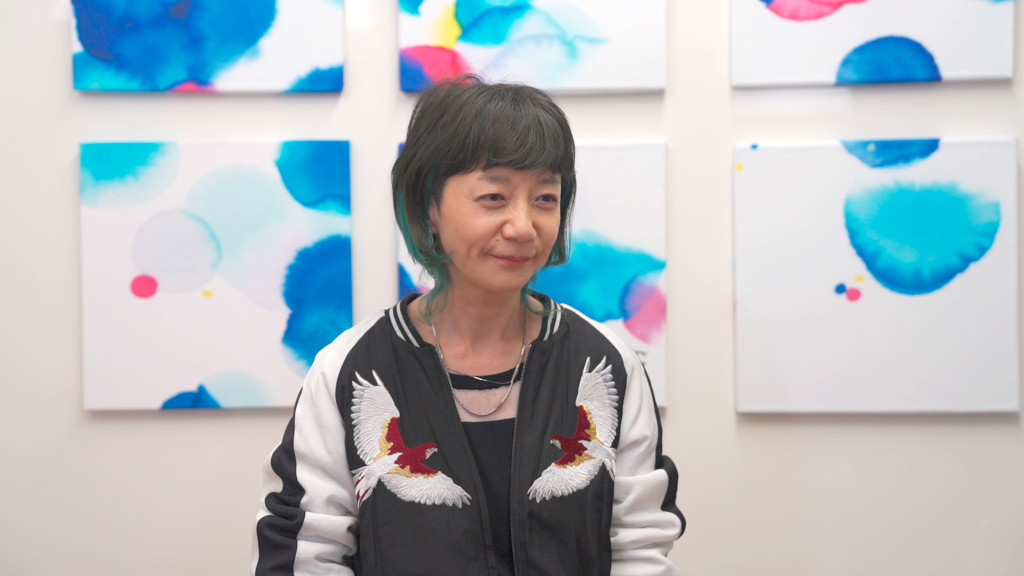【Interview】COPIC AWARD 2019 Judges : Junko Koshino and Rumiko Tezuka
We did interviews with Tsutomu Okada, Junko Koshino, Rumiko Tezuka, Arina Tanemura, and Kei Matsushita, who were judges for the COPIC AWARD 2019.
We divided these interviews into 2 parts in order to fully convey the judges' words (for example, key points when evaluating entries, the relation between art and social media, etc.) to everyone who is engaged in creative activities—particularly to people who are aiming to become professional artists.
Part 1 covers the interviews with Junko Koshino and Rumiko Tezuka.
Interview with Junko Koshino

|
Junko Koshino Designer When Ms. Koshino was a mere 19 years old, and the student of Bunka Fashion College, she won the 7th SOEN Award (which is known as the first step to a successful career for fashion designers). She became the youngest designer ever to win this award. |
_Please give us your impressions after judging the entries.
It was interesting to view entries submitted from all over the world because many artworks gave me glimpses of variations in individuality and ways of life. I was amazed that there were so many people who were good at making such detailed, intricate drawings.
_I think that there were a lot of works like comics or anime that you don't usually see. What did you think?
That’s a sign of the times and it’s completely fine to me.
I wouldn’t necessarily choose those kinds of artworks myself, but I think it’s OK for people who specialize in the manga/anime fields to choose those styles.
_From what kind of perspective did you judge the entries?
Unexpectedly, I thought that the drawings of real things in everyday life were interesting.
Regardless of what kind of environment participants are living or what kind of contest it is, I think they have to have a certain level of skill—or else they wouldn’t be able to express what they were trying to convey.
The art conveys the message first, then it metamorphoses into various forms. This is common to clothing design, furniture design, or even cooking. Artistic taste is also very important.
Artists must have an interest and aptitude for the technical process of drawing. That is fundamental for every artist no matter what direction they take in the future.
_I heard that you were a painter at first.
I was doing oil paintings. I was painting intense, abstract style paintings, but I also liked the graphic design and things like what is now known as textile design. So, I get excited when I see how many Copic colors there are (laughs). A long time ago, when I was a little child, my heart beat faster just from seeing 30 shades of colored pencils or crayons, but there are a lot more Copic colors. I envy today’s young people. I think this is a good time to be an artist.
_As of right now, there is a total of 358 Copic colors.
I imagine what if all these Copic colors are available on fabric. What would happen if Copic colors are used on materials other than paper? I can see a lot of potential there.
Actually, I have a collection of fabric samples of approximately 1,000 colors dyed on Japanese silk. I call them “Japanese Colors”. My source of inspiration is everything that I see in my daily life—it can be from anything, like rose petals, chocolate, or whatever.
My fabric samples were dyed with colors that inspired me.
Then I pick some colors from that collection to use in my designs.
These samples are small pieces of fabric, but I keep them and never throw them away.
I wondered what would happen if I made fabric with Copic colors, but I think that finding Copic colors out of my existing color samples would be really difficult. Vice-versa, I think it would be convenient to have color swatch cards to reference when creating art on paper.
_Nowadays, there are more places online where people can express themselves, including social media. Please tell us your thoughts on that.
There are so many options in terms of methods of expression nowadays, including digital art. Many people don't create art by hand anymore and we get used to that.
Still, I think drawing by hand is important, and gaining such experience is necessary for all artists. Hand drawing is a fundamental method of expression. As a child, we learned how to draw by hand at school, and we instinctively remember how it works. This deep, internalized lifelong knowledge is very helpful for artists. Young people referred to as digital natives would not know that kind of sense, and I think that will significantly affect them later into their careers.
_Please give a message to young artists in the world who are planning to create art using Copic products.
It's hard to explain the passion for expression with words because this is not something that’s logical. Your heartbeat accelerates just by looking at colors, and you want to draw something... That's what it's all about.
It may be difficult to express yourself using only monotones, but if you use art materials that have a lot of colors like Copic, it may lead to your confidence. So regardless of age, I think it’s important for people to be in an environment where they can have access to art materials with an abundance of colors, like Copic.
Interview with Rumiko Tezuka

|
Rumiko Tezuka Director & Planning Producer of Tezuka Productions Co., Ltd. Ms. Tezuka is a daughter of Japan's pioneering manga artist Osamu Tezuka (Astro Boy, Kimba the White Lion, Phoenix, etc.). After the passing away of her father in 1989, Ms. Tezuka has been working as a producer involved with father's vast intellectual properties. She is also very active in various fields such as organizing art exhibitions, appearing on radio, writing books and even running her own record label called MUSIC ROBITA. |
_Please share your impressions after judging the entries.
I already saw the winning works in data format beforehand, but today I was able to see the artworks in person for the first time. That was a completely different experience. Surprisingly, many works looked completely different between the image data and the original. Some works that I liked in the data format did not have as much impact as I had expected when seen in person.
At the same time, seeing some other pieces in person, I was blown away by the skills I couldn't recognize just through the data image. Everything was fresh and exciting.
_The artworks this time covered a wide range of genres. Was there anything that you struggled with during the judging process?
I don’t draw myself, so I couldn’t determine how the artists used Copic markers to create the artworks, and it was difficult to judge the technical scores. I can see the impressions, ideas, humor, impact, beauty, and intricacy of the pieces, and so I emphasized these points when I made my selections.
_What kind of impression did you get of Copic products through the awards this time?
I have seen many illustrators and manga artists I know use Copic, and I had a strong impression that Copic markers were used for drawing and coloring. But in the COPIC AWARD, I saw entries colored using Copic that look three-dimensional, and I thought that this was a very original way to use them. In the judging process, I felt that I saw a wide variety of ways that Copic can be used, such as to bring out the shades and gradations of colors using techniques that are similar to watercolors, even though these are alcohol-based markers.
_What do you think the significance is of contests like the COPIC AWARD?
I think competitions like COPIC AWARD are great opportunities for encouraging artists of all ages. If both younger and older artists can take up the challenge, that would be wonderful. I think that being accepted by professionals who are active in the art industry will give artists the self-confidence to express themselves. I would like the winners to use their valuable experiences to humbly progress forward to their next step.
_Nowadays, drawing illustrations digitally has become mainstream. What do you think about the significance of analog drawing?
The amount of people who draw digitally has significantly increased, and now they use computers to make fine color adjustments. However, I have heard many manga artists say that computers ultimately can’t produce the lines or the subtle shades that people can create. I think that the profoundness of hand drawing can probably only be expressed through analog methods. Back in the day, my father Osamu Tezuka drew manga using pen and ink. I think that’s the reason why he was able to create very unique art that didn’t imitate other styles.
Choosing the analog format even in this heyday of computer technology is very meaningful and it’s worth paying attention to.
_If Tezuka-sensei was here now, do you think he would be drawing digitally?
That's a question that I get asked often. As you know, many manga artists are transitioning from traditional pen and paper art to digital art now. My father had a strong competitive spirit, so he would have taken up the challenge of creating his works digitally. However, I can’t say anything about whether he would have mastered digital methods himself. I guess he might have ended up hiring an assistant who was skilled in such technology.
_Nowadays, with the rise of social media, I think there are more places online where people can express themselves. Please tell us your thoughts on that.
I think it’s tough to express ourselves on social media. My father often received fan letters that said things like “your manga is boring”. I have said “it’s boring” to him too, without thinking anything. Hearing such things from his daughter must have been pretty heartbreaking for him. People are surprisingly straightforward, especially children. Maybe too straightforward. Those words made him feel depressed, and there were many times when he thought “Oh god, I’m no good.”
People can easily post on social media, and those platforms have become places where people say mean things with no remorse. The distance between artists and fans (and people who are not even fans) have become closer, and this is a very difficult time for people to express themselves to the world through art. Also, many artists are highly sensitive, and if their art is rejected, they may feel like this equates to themselves personally being rejected. This is a scary thing. I think that it’s difficult for artists to survive in this situation unless they have guts and a strong will to continue. They need to overcome an environment where cyber-bullying is routine, and it's so tough. Even if there was no malice whatsoever in what a fan said, it's really easy to end up getting damaged by words that seem mean. The internet caught on after my father passed away, and I think it might be a good thing that he was not an artist of current times. I really think so (laughs).
_Earlier, you said that Tezuka-sensei had a strong competitive spirit. As one of his fans, I would like to hear some stories about this (laughs).
As you might expect, he had a heart that would not give up, and that competitive spirit led to his ability to keep going. As generations changed, many people started to say “your manga is boring” to my father. It was during a period when fans were saying that Katsuhiro Otomo was cool, or that other new manga artists were cooler. If my father had thought “I’m an outdated, washed-out old man. It’s over,” and had stopped drawing his manga, he never would have been able to accomplish what he actually did. I think he was able to keep moving on to the next step because he had the mentality of “I won’t lose to them, I can do it too,” and took up the challenge.
Competition among manga artists is extremely intense and the environment surrounding them is severe—so many manga artists had to stop drawing. Also, we're living in difficult times where people insult each other on the web within the safety of anonymity. However, artists shouldn't get depressed every time they get trolled. They need to be mentally strong.
_So, what type of competition do you think the COPIC AWARD should be in the future?
I want artists to use their creativity and skills, blending both analog and digital technologies to challenge themselves to create artworks that have never been seen before. It would be amazing if such contests could be a step towards helping artists make art for a living.
_Do you have any thoughts on what it means to make art into a career?
When we are young, there are a ton of things that we want to express, and we can use that enthusiasm for creative work, whether it’s manga or art. However, I think it’s pretty difficult for a person to spend their life as an artist without considerable resolve.
Even if someone wants to be an artist with temporary enthusiasm, it becomes difficult to maintain the same spirit after they have gotten older and have been through so much. Eventually, they become an adult and may reach the point of asking themselves, “what do I really want to draw and show to the world?” I think they can keep going if they keep finding new themes that they want to work on. In life, when people reach a certain stage, it becomes necessary to reflect upon themselves and choose a different path. If artists can do that, they might be able to create art as a career for their entire lives.
Essentially, there is true freedom in art. Expressing thoughts and releasing feelings become a form of recreation in a person’s life. That's not a bad thing, and if art stops at that stage, I think the artist's life would be very simple. However, if someone wants to make art into a life-long career, they may face many difficulties.
When an artist gains an audience, it can be a very tough battle because the sensitivity of each generation is different. If the artist can keep on trying while always thinking about what their next stage of growth is, then I believe they can make art into a career.
The most fun part of art is to release your feelings, whether it’s a hobby or whatever. Even if you are stressed out or depressed, expressing the mind or fictional worlds can save your mental state, become a strength for living and a tool for communicating with others. That's the reason why we love the process of drawing. However, if you create art as a career, that’s another story because the mental burden will significantly increase (laughs). It would be much easier if you can forget all the responsibilities and just focus on art.
_Please give a message to young artists in the world who are trying to create art with Copic products.
Even if you have just one Copic marker, you can portray the imaginary world that is impressed in your mind. My father, Osamu Tezuka, started his career by drawing doodles when he was a kid, and his dreams got bigger and bigger, and finally, he was able to become a manga artist. Grab your Copic and find your dreams and your next path!
We appreciate Junko Koshino and Rumiko Tezuka taking the time to talk to us.






